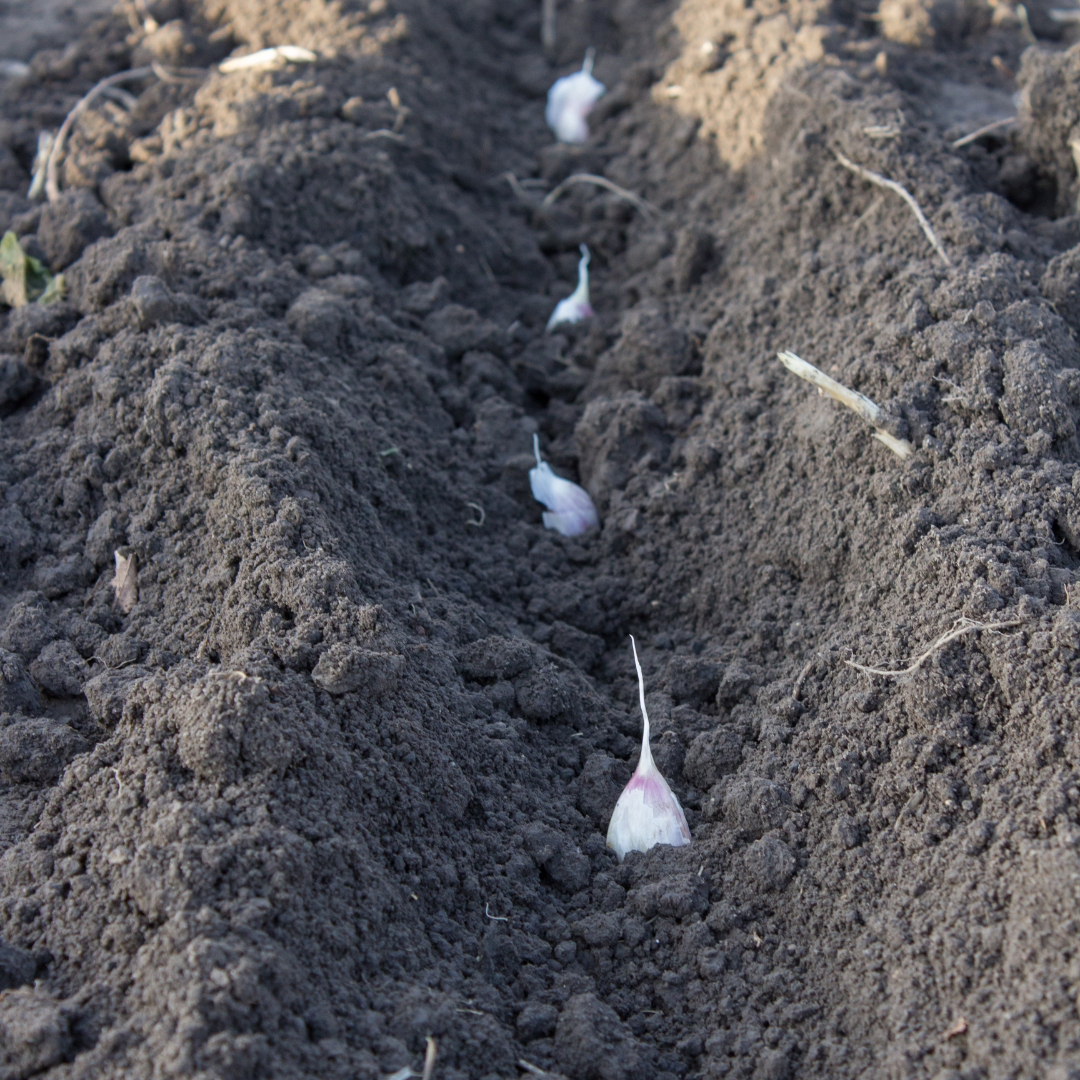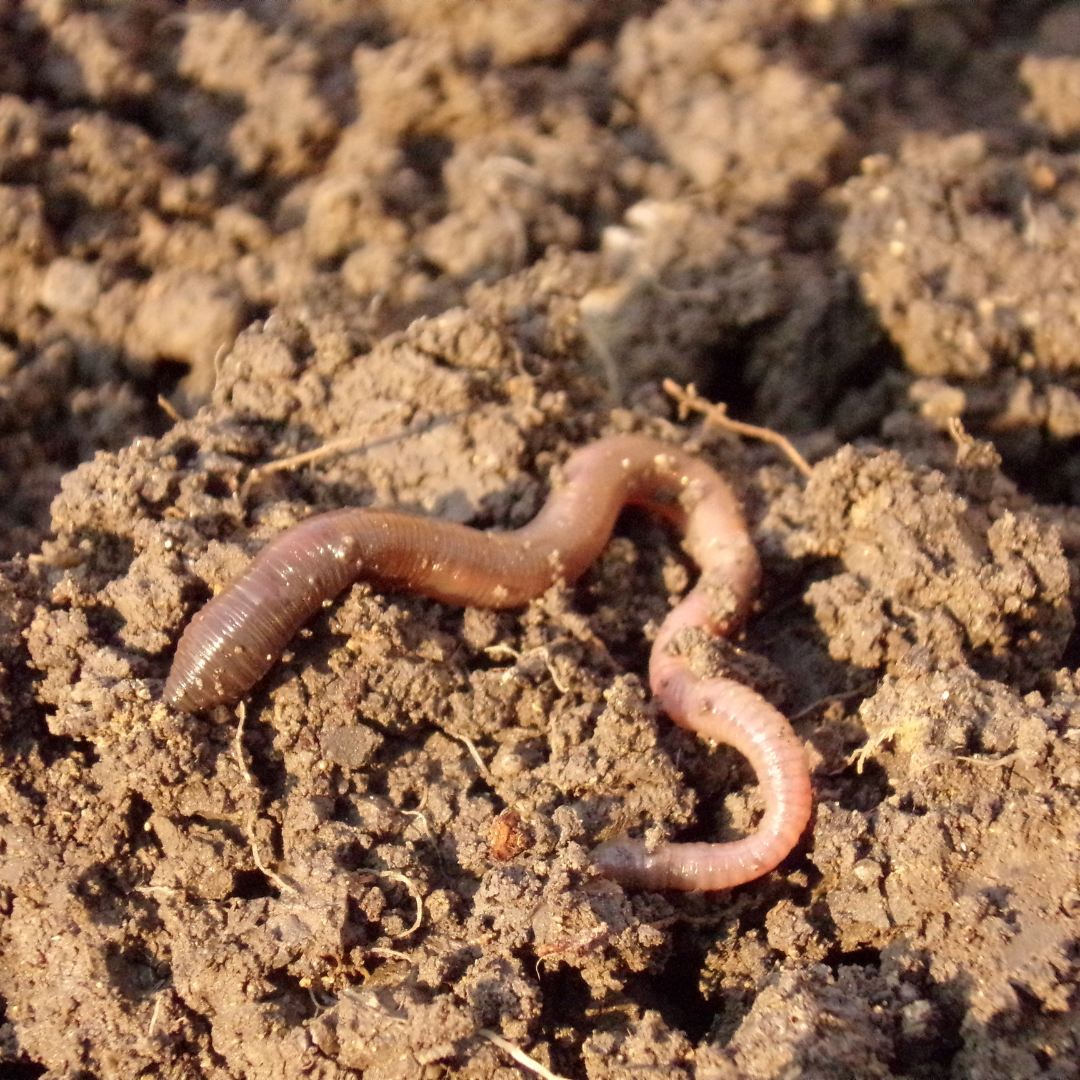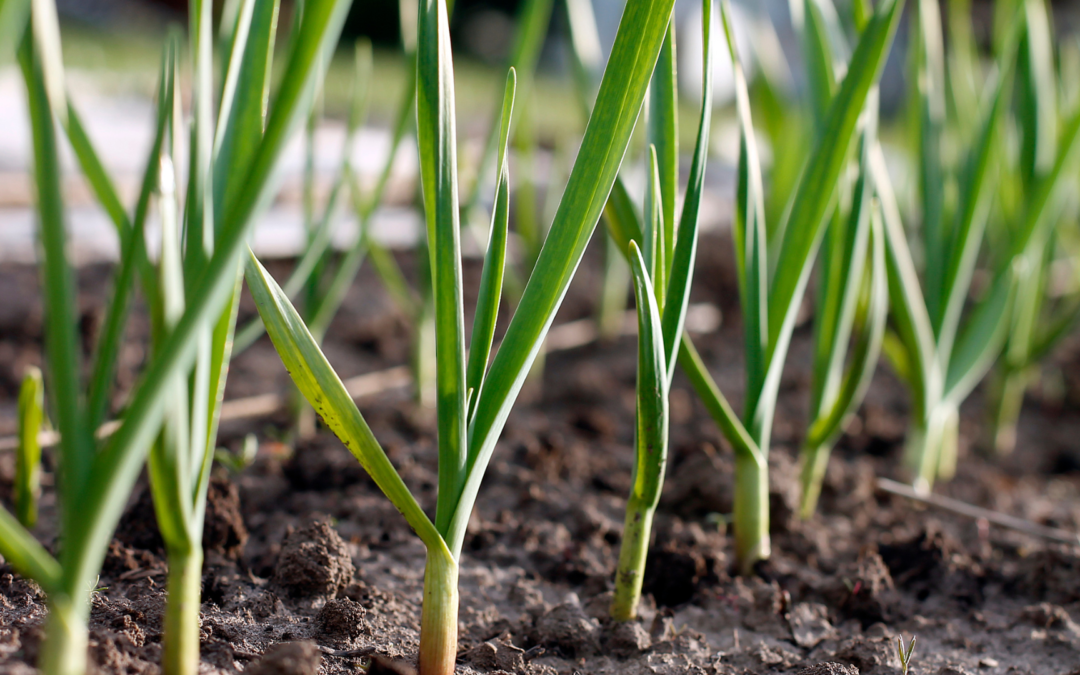Guide to Growing Garlic in California Using Regenerative Organic Farming Methods
Garlic is a high-yield cash crop that can be grown year-round, but the best time to plant garlic in California is between September and December. Planting during this time allows the garlic cloves to establish roots before the winter freeze sets in. Regenerative organic farming practices can help to achieve healthy garlic crops while promoting soil health and biodiversity.

California Soil Preparation
Before planting garlic, the soil should be well prepared. Clear the land of any weeds, rocks, and debris. The ideal garlic-growing soil is well-draining, rich in organic matter, and has a pH of 6.0-7.0. We recommend incorporating well-composted organic matter such as manure, compost, or green mulch into the soil and till or dig the soil at least 10 inches deep, removing large chunks or stones. The soil should also level to ensure the garlic bed is even.

Planting Garlic In California
The ideal climate conditions for growing garlic in California include cool and moist weather. The planting depth of garlic should be at least 2-3 inches deep with 6-8 inches of space in between each garlic bulb. Once the garlic cloves are in the ground, they should be covered with well-rotted mulch to help retain moisture and improve soil health.
Primary Factors Involved in Garlic Growing Cycle
The growth cycle of garlic comprises seven stages: seedling, leaf production, the formation of bulbs, the swelling of bulbs, the maturation of bulbs, drying, and curing. During the seedling stage, garlic requires consistent irrigation and controlled weed growth. Garlic plants need adequate water and nutrient supply to promote healthy leaf production. The plants require a consistent water supply and extra nutrients at the bulb stage. In the swelling stage, it is essential to reduce the water supply moderately. During maturation, garlic plants require minimal watering to prevent rotting.
Preventing Pests and Diseases
Pests such as aphids, spider mites, and thrips can invade garlic plants. We can control CA pests by using natural predators like lady beetles, lacewings, and parasitic wasps. Diseases like white rot, fusarium, and nematodes can also affect garlic plants. The key to preventing these diseases involves crop rotation, using disease-resistant varieties, and ensuring proper soil drainage and proper composting.
Regenerative Organic Farming Practices
Regenerative organic farming practices, such as crop rotation, cover cropping, natural pest control, and compost, can help promote sustainable garlic farming. Crop rotation helps prevent erosion, enhance biodiversity, and promote healthy nutrient cycling. Cover cropping helps to prevent soil erosion, improve soil structure, and suppress weed growth. Natural pest control methods can help control pests or diseases without pesticides. Lastly, using compost helps promote soil health and nutrient cycling while fostering the growth of healthy plants.
Ready To Plant Garlic In California?
In summary, growing garlic in California using regenerative organic farming practices can lead to a thriving crop that is healthy and sustainable. Following the steps outlined in this guide can promote soil health, prevent pests and diseases, and achieve a successful garlic crop in California.

Contact
Contact Page Form
